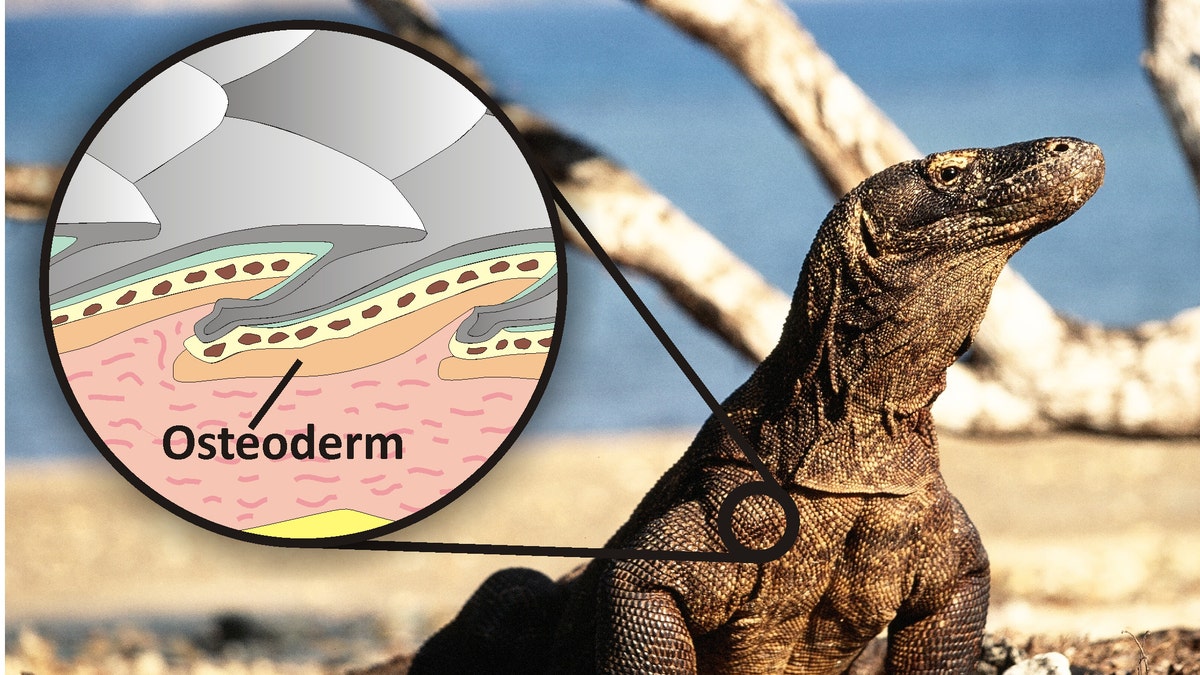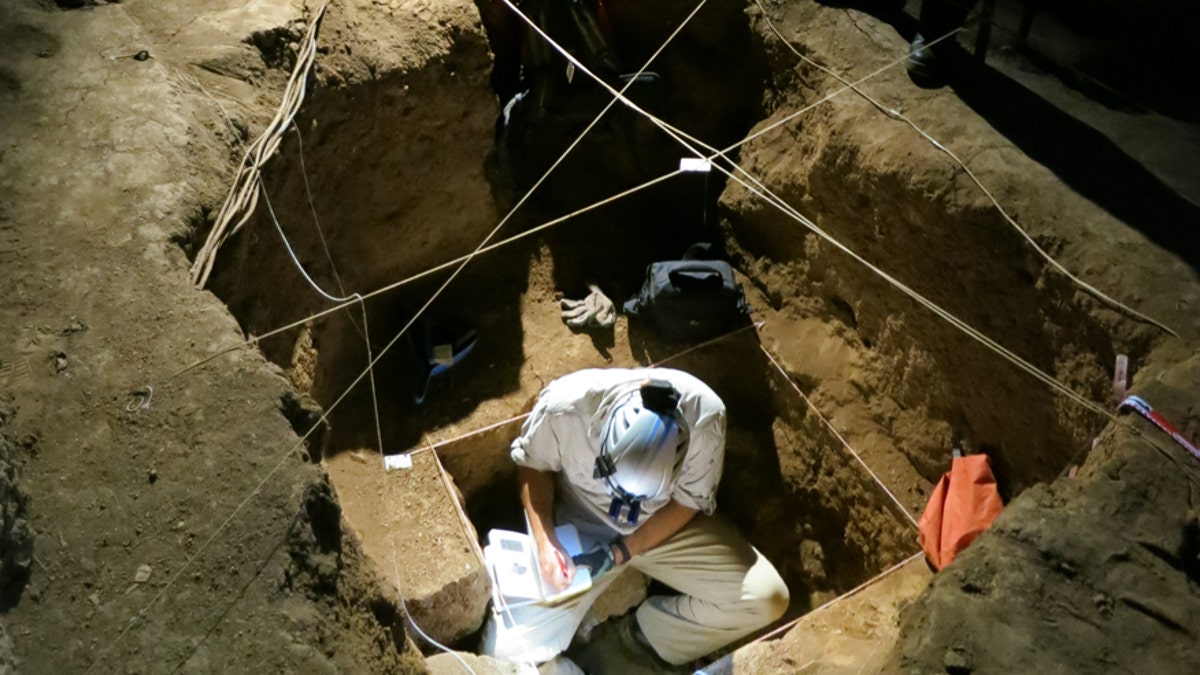
Komodo dragon and illustration showing how the osteoderm bone reinforces the scales and acts like body armor. (Photo of the Komodo dragon by Bryan Fry, inset by Gilbert Price)
While the concept of men battling 16–foot prehistoric lizards sounds like something out of a 50’s sci-fi flick, a new discovery in Australia has revealed that such encounters may have occurred. According to a study appearing in Quaternary Science Reviews, researchers from the University of Queensland have found a tiny fossil that belonged to a giant lizard bone 50,000 years ago, indicating that gigantic reptiles and humans once co–existed.
The bone – an osteoderm, which grows under the lizard’s skin and serves as internal body armor – was found in one of the Capricorn Caves near Rockingham, Queensland. According to Queensland University Vertebrate Palaeoecologist Gilbert Price, while the 1 cm bone is tiny, it tells a huge story.
“We were really blown away by this discovery!” he told FoxNews.com. “The significance of our finding is that it shows that these big, cold–blooded killers and Australia’s earliest humans were here at the same time.”
Related: Paleolithic hunter-gatherers loved oatmeal too
Price and his team used radiocarbon and uranium thorum techniques to date the bone at younger than 50,000-years old. Naming what giant lizard it came from, however, has proved more of a challenge, though they’ve narrowed it down to a few likely candidates.

Excavation in the Colosseum Chamber at the Capricorn Caves. (Image: Gilbert Price)
“Even though the osteoderm is only around 1 cm long, we can tell that it’s from a huge lizard, either the Komodo Dragon or an even bigger species called Megalania Prisca,” Price explained. “Most people might not realize that Komodos used to roam all over Australia - in fact, the oldest fossil records suggest that they actually evolved here, some 3.5 million years ago.”
The now–extinct Megalinia, the bigger of the two species, measured between 11 and 16– feet long and thrived in eastern Australia, roaming its forests and grasslands. Using its sharp, curved teeth, the giant reptile fed on a diet of snakes, birds, other reptiles and large mammals. Naturally, this raises the question of whether or not humans were on its grocery list. Price says that while the human/giant prehistoric lizard relationship is still an unknown, he would be surprised if there weren’t regular encounters.
Related: Mass grave of new human relative discovered in South Africa, claim scientists
“Although giant lizards were still around in Australia at the same as the earliest humans, we don’t yet have direct evidence that people encountered them directly, but we are looking!” Price said. “I’m not sure how delicious a human would have been to a giant Ice Age lizard, but there were plenty of other things on the menu at the time, including massive eight foot–tall kangaroos and these weird wombat-like mega-marsupials called diprotodons - 3 tons of slow-moving muscle.”
It’s worth noting that Komodo dragons, which can measure up to 10 feet and live only on a few Indonesian islands, have been linked to numerous gruesome attacks on humans over the years – Hollywood star Sharon Stone’s then husband was attacked by one of reptiles in 2001, and another killed an eight year–old boy in 2007. However, ancient humans were probably more of a threat to the giant prehistoric lizards than vice versa, as many scientists believe that hunting is what helped kill off many of Australia’s megafauna – giant versions of modern animals, such as the aforementioned eight–foot kangaroo and three–ton wombat.
Price and his team are planning to continue their research and trying to find even younger records of these giant lizards to find out what led to their demise. “The data that we’re collecting is really important for testing hypotheses relating to their extinction,” he said. “It’s that information that helps us build a better picture of Ice Age life, and ultimately can reveal more detailed information about what drives extinctions in general.”
